Climbing Shoes Digging Into the Achilles Tendon: 3 Solutions
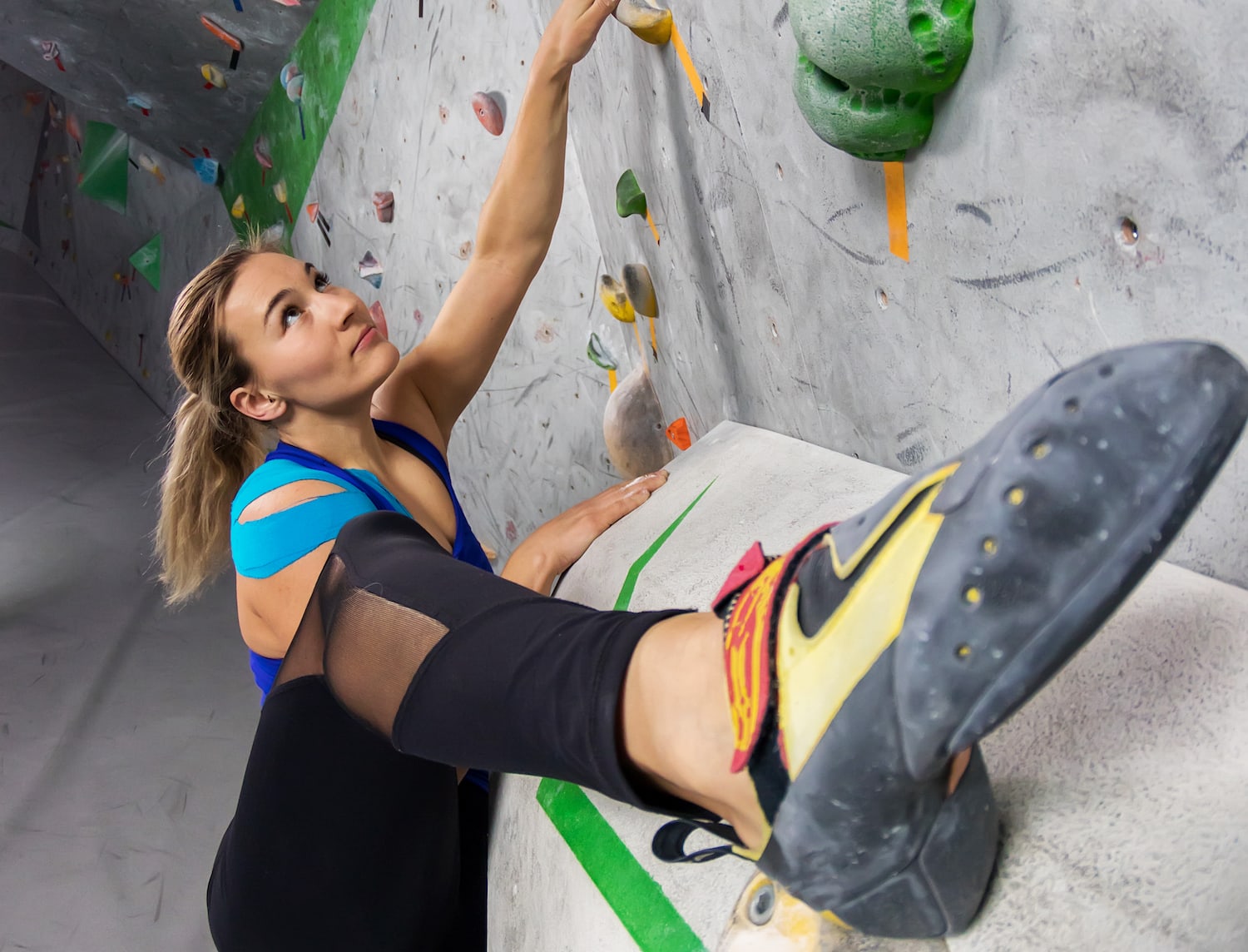
Finding the perfect pair of climbing shoes can be very tricky. The sizing is often all over the place, and some shoes just don’t feel good when you try them on. Maybe there’s too much dead space, the fit doesn’t feel secure, or you don’t like how they perform.
And even then: after finding what seem to be great shoes, sometimes you discover they’re uncomfortable after a few sessions.
A common complaint is the Achilles tendon. This strong fibrous cord connects your calf muscles to your heel bone (1). The point where everything comes together is called the insertion point. Unfortunately, rock climbing shoes often put pressure on this part.
In this article, we will go over easy practical solutions to deal with this.
Understanding Haglund’s deformity
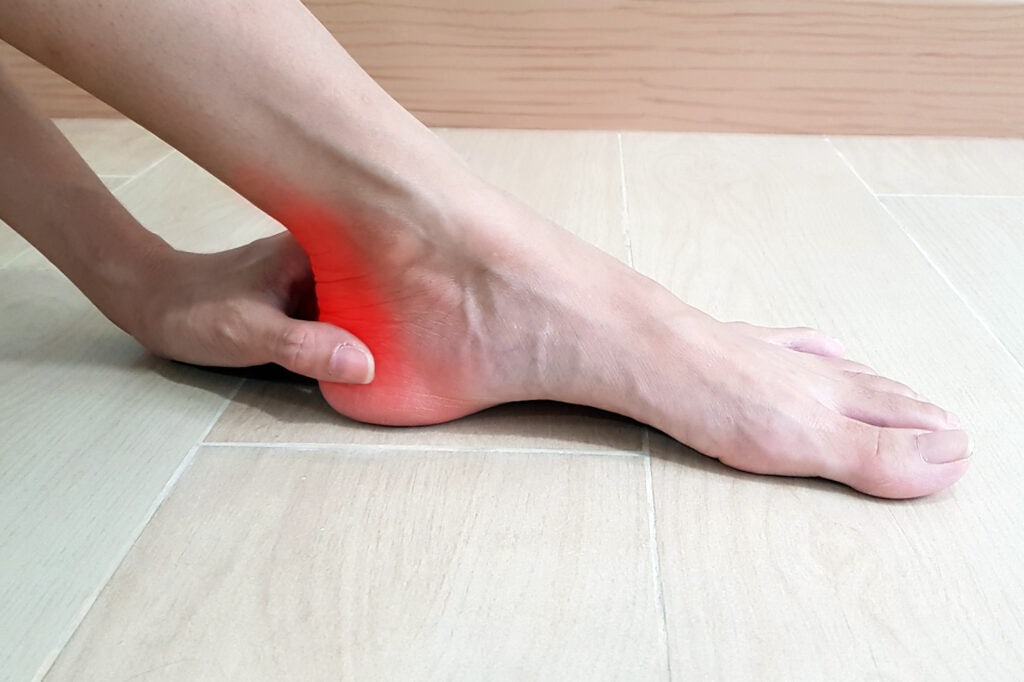
Luckily, heel pain from climbing shoes doesn’t always come from or lead to Haglund’s deformity. However, it’s an important condition to know when we talk about climbing shoes and heel issues. Indeed, anyone with this condition is bound to experience pain when wearing climbing shoes.
Named after Patrick Haglund, who discovered it in 1927, this condition affects the bone and soft tissues in the foot and consists of “an enlargement of the bony section of the heel” (2).
Haglund’s deformity (also known as pump bump or retrocalcaneal exostosis) is not easy to treat because it can come from different conditions like Achilles tendonitis and retrocalcaneal bursitis.
Luckily, conservative treatment methods are often enough to get better, and surgery is rarely needed. However, wearing climbing shoes can aggravate it, so it’s important to take appropriate steps to prevent the condition from worsening (or appearing in the first place).
First and foremost: Talk to a professional

We can’t stress enough how much a good physiotherapist can help to diagnose a problem and pave the way to recovery. Also, many climbing gyms have an in-house physio or partner with one to offer free consults. Even if you have to pay, it’s often worth it.
Therefore, this is what we would recommend before trying anything else. Any pain is a serious issue and can dramatically hamper progress (imagine having to rest for weeks or months!).
Important: What you read in this article should not be considered medical advice. We are sharing tips based on our experience and research.
So, with that out of the way, here are our solutions to prevent your shoes from hurting your heel.
1. Resting your heels (and feet) when you’re not climbing
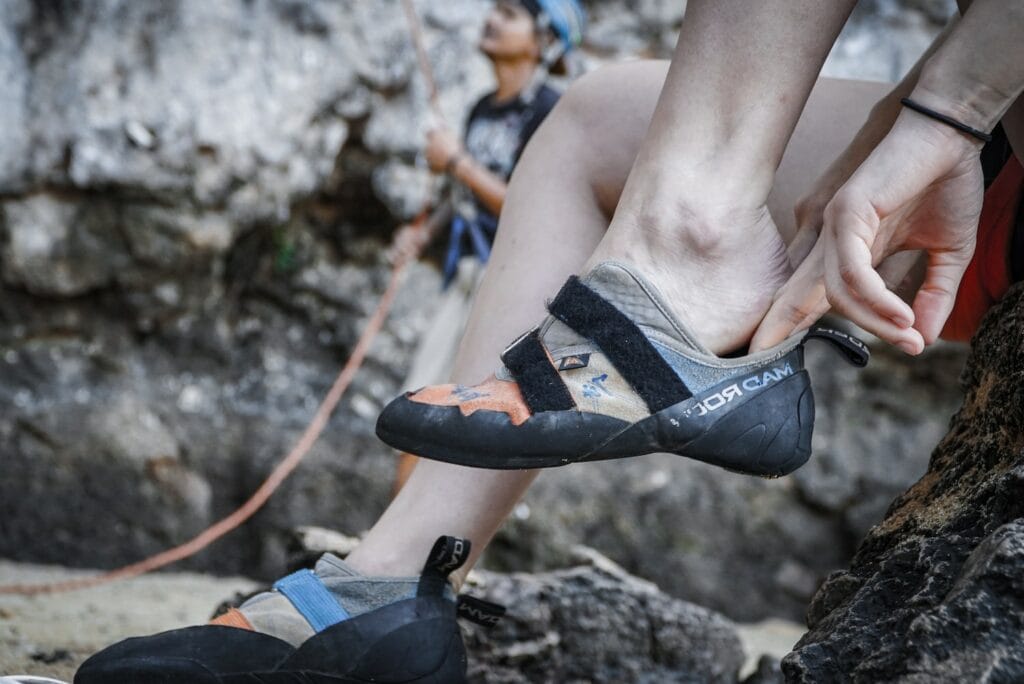
It may seem unnecessary, especially if you wear comfortable climbing shoes without any downturn. However, taking your shoes off when not climbing will keep them in good condition longer and allow your feet and heels to rest.
It’s quite common with roped-climbing for belayers, but that’s something boulderers don’t automatically do. That’s even more important if you’re wearing aggressive shoes.
Grab a pair of flip-flops and take the effort to remove your shoes whenever you’re not on the wall, especially for walking. Of course, velcro shoes help and should be the default option in case of heel problems.
2. Adapting your shoes

Besides removing your shoes any chance you get, as if they were some dirty dish rags, you may need to adapt your current pair of shoes if they’re causing pain or discomfort.
Sizing and breaking in
Climbing shoes should fit snugly but comfortably. There shouldn’t be any pain. Some advanced climbers size down up to a very uncomfortable point to get marginal performance gains, but that does not apply to the average climber.
Overly tight climbing shoes can cause the shoe to put too much pressure on the insertion point of your heel, causing pain. Return them if you still can.
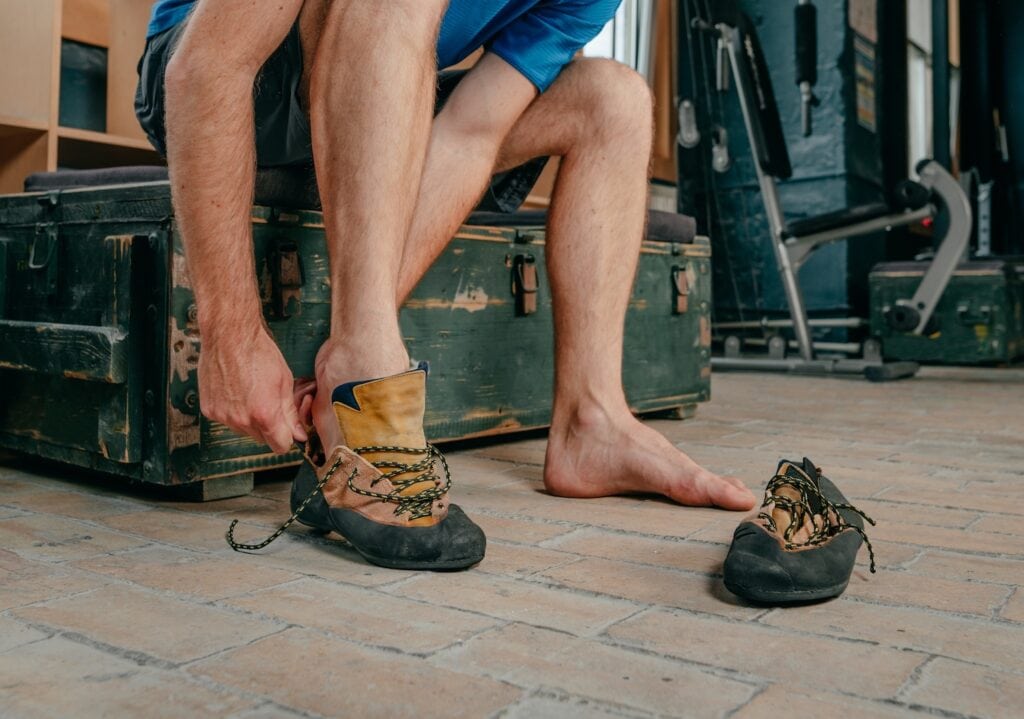
However, some models take time to break in when they’re new, so the fit may become more comfortable over time. It’s particularly true for leather shoes: they are likely to stretch over time and alleviate some of the pressure.
For more information, check out these articles:
Padding
If your shoes are not too tight, you can try wearing socks to add a protective layer between the shoes and your feet.
If you are worried about ridicule at the gym or crag, or if the cushion is not enough, then we have something else for you.
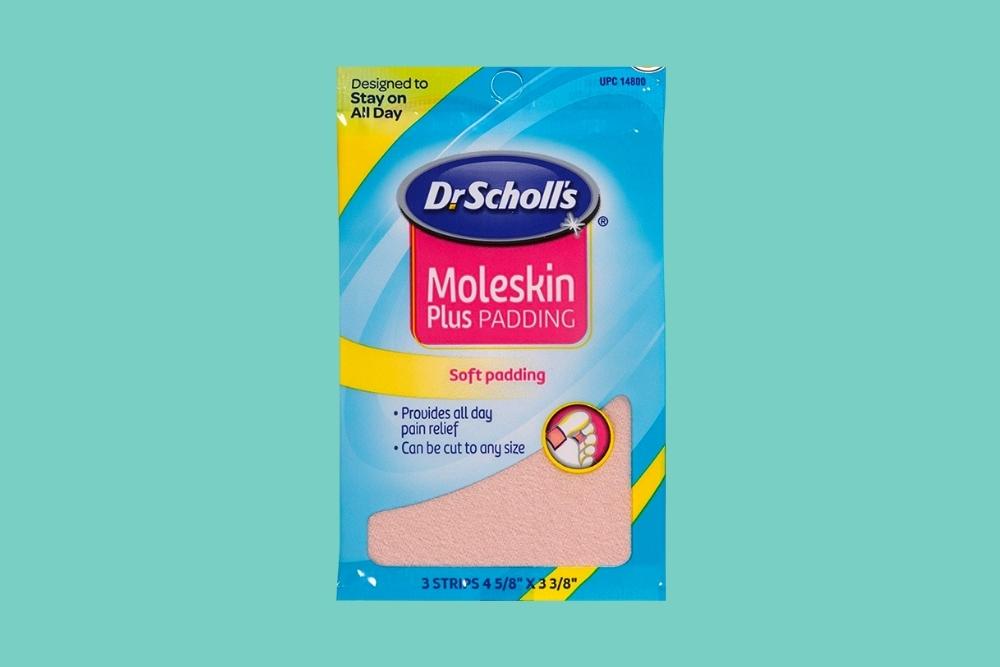
Some climbers stick Moleskin to the sensitive part of their feet to prevent rubbing and friction. It’s sold over the counter in supermarkets and drugstores. It’s not a miracle solution that will work for everyone, but it’s worth a try, as some report success with this solution.
Similarly, some people use neoprene to pad their shoes. It’s more of a DIY solution as you can find it with existing gear (e.g., an old wetsuit) and cut strips to put in hot spots.
Cutting
If the above is not enough to relieve the discomfort and you still experience pain, then there’s always one last solution worth trying: cutting your shoes!
Ideally, you should only do this with an old pair of shoes as it’s possible you will ruin them.
The idea is to cut a T-shape hole where the climbing shoe is uncomfortably touching your tendon to relieve the pressure. You will most likely have to cut through the rubber rand, so you will need to use something sharp like a box cutter. The modification should be minimal to preserve the integrity of the shoe as much as possible. You can also stick a moleskin pad to keep the area closed.
3. Get new shoes
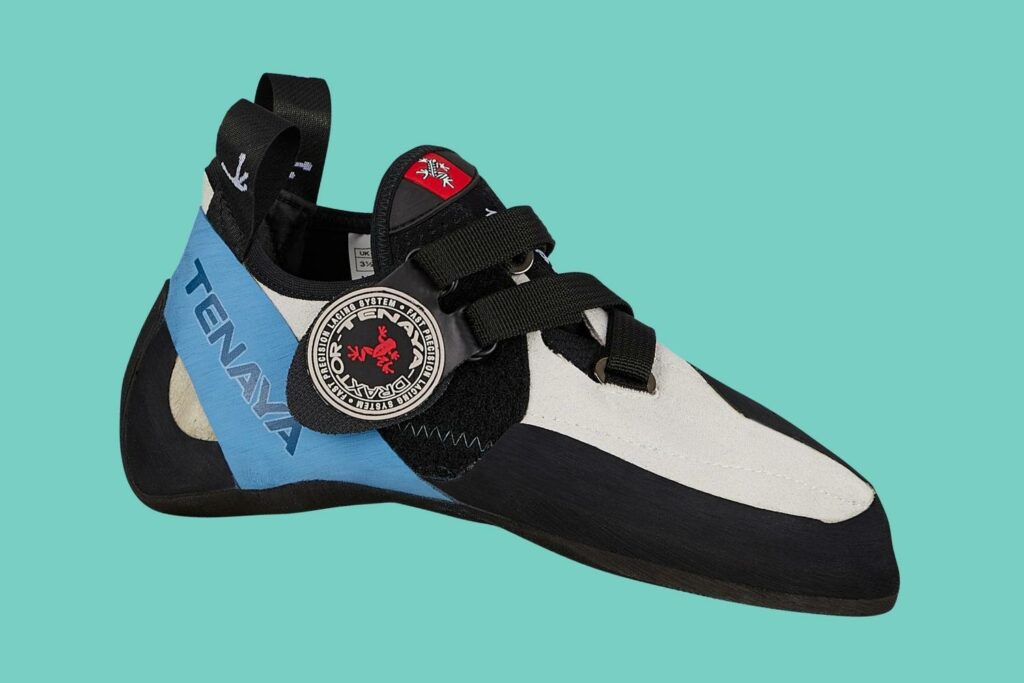
If you can’t get anything out of your current climbing shoes but pain, then it’s time to look for a new pair.
Luckily, this topic has been covered by many forum threads on the Internet, and users have suggested a few models that worked for their condition. Of course, you should take all this with a pinch of salt. Everyone is different, so what’s good for one athlete may not suit you.
The ideal shoes to prevent painful heel rubbing share the following criteria:
- Low-cut: shoes with a low upper are less likely to completely wrap up around the heel and cause discomfort
- Low heel tension: similarly, it’s better to go for shoes that don’t press on your Achilles too much.
Also, a soft counter may seem more suitable, but that’s not always the case, so we recommend trying different levels of flexibility to see what’s best for you.
Here’s the list of shoes that can potentially help:
| Model | Type | Downturn | Closure |
|---|---|---|---|
| 5.10 Gambit Laces | Comfort | Neutral | Laces |
| Evolv Nighthawk | Comfort | Neutral | Velcro |
| Evolv Royale | Comfort | Neutral | Laces |
| La Sportiva Mythos | Comfort | Neutral | Laces |
| Tenaya Oasi | Performance | Aggressive | Velcro |
| Tenaya RA | Comfort | Neutral | Velcro |
| Scarpa Drago | Performance | Aggressive | Velcro |
References
Mayo Clinic, Achilles Tendinitis (Reviewed on 08/20/2022)
https://www.mayoclinic.org/diseases-conditions/achilles-tendinitis/symptoms-causes/syc-20369020
Haglund’s Syndrome: A Commonly Seen Mysterious Condition
Vaishya et al. (2016)
Cureus Journal of Medical Science
https://www.ncbi.nlm.nih.gov/pmc/articles/PMC5101401/
